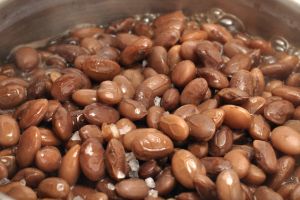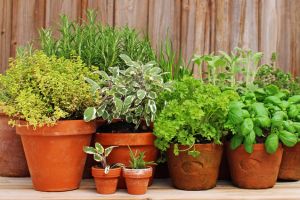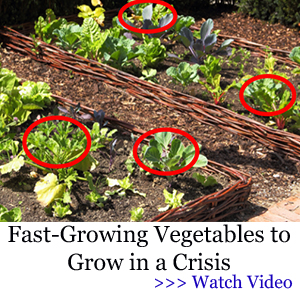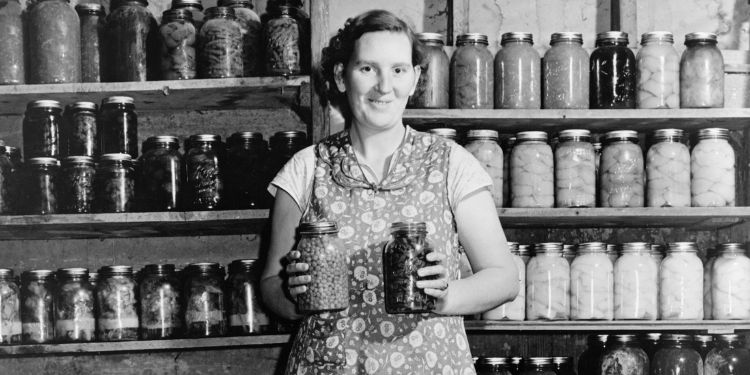A Great Depression pantry isn’t just a nostalgic nod to the past—it’s a proven method for long-term food storage that helps you stay prepared for whatever crisis may come.
With the right skills and supplies, you can create a food reserve that will help you and you family survive through hard times.
Here are four essential steps for creating your own Great Depression pantry:
Get Back to Basics
The backbone of a Great Depression pantry is simple, shelf-stable ingredients. Instead of planning complicated meals, I store supplies for simple meals. Stews, chili, and soup are fantastic for combining your stored ingredients. Casseroles with pasta, rice, or potatoes are also options for complete meals to feed an entire family.
Be Economical
Building a Great Depression pantry is budget-friendly! Basic ingredients cost much less than pre-made meals and have a longer shelf life. By saving money, you can store more food while maintaining flexibility in meal planning.
If you have a garden, preserving your harvest by canning or drying fruits and vegetables adds another layer of self-reliance and cost-saving. And even if you don’t have one yet, you can learn here how to easily set up a self-sustaining garden that will keep your family well-fed year-round, even in a crisis. You won’t need to become a full-time farmer or have a lot of space to get started.
Learn How to Do It Yourself
 Preparedness is more than just stockpiling food—it’s about having the skills to make the most of what you have.
Preparedness is more than just stockpiling food—it’s about having the skills to make the most of what you have.
When starting to build my own Great Depression pantry, I realized I needed new skills. Baking bread, gardening, and canning my own food was just the beginning.
I also found growing and preparing food is rewarding. Along the way to building my pantry, I learned that this egg preservation method makes eggs last for over a decade, so I plan on going adding more for my stockpile.
Plan Your Pantry Thoughtfully
A well-planned pantry requires knowing exactly what ingredients to store and why. Here’s a breakdown of essential food categories and what you should include.
Grains
Grains are essential to store in a Great Depression pantry. Wheat bought and stored in large plastic bins lasts for over thirty years! To use it, you’ll need a wheat grinder to turn your wheat into flour. You can also cook roughly ground wheat like oatmeal for cereal – it has a wonderful flavor and can be sweetened with sugar or honey.
Flour also thickens soup or sauces and can be used to make tortillas, bread, and biscuits. You can even make pasta!
But there are more grains to store than wheat. By keeping a variety, I can make more meals. Rice, quinoa, and millet are basic side dishes but can also be used in soups and other meals. Oats, rye, buckwheat, and flax can be added to bread or cereal. Ground corn can also make tortillas or cornbread. Grains are called the staple of life for a reason!
Grains that are great for storage: wheat, rice, oats, corn, quinoa, buckwheat , millet, flax.
Protein
 Other than eggs and meat, dried beans and lentils provide an affordable and long-lasting protein source. Even though beans taste best if used in a couple of years, they last for a long time and can still be used when stored in an airtight container.
Other than eggs and meat, dried beans and lentils provide an affordable and long-lasting protein source. Even though beans taste best if used in a couple of years, they last for a long time and can still be used when stored in an airtight container.
Related: How to Dry Can Beans and Rice for 20+ Years Shelf Life
The trick to using dried beans is to soak them in salted water for 4-12 hours. But longer is usually better. Beans are great in soups, stews, salads, or as a side dish.
I’ve even pressed them together with a little oil and spices to make patties that I cooked on the grill like a hamburger.
Beans and lentils to add to the pantry: pinto beans, chickpeas, lentils, black-eyed peas, navy beans, kidney beans.
Vegetables and Fruits
Vegetables and fruits are essential for good nutrition. In my garden, I grow green beans, peas, cucumbers, beets, carrots, potatoes, sweet potatoes, peppers, tomatoes, radishes, eggplant, onions, and zucchini.
For fruits, I have strawberries, an apple tree, a peach tree, and a pear tree. Those are the basics that I bottle to keep in my pantry. But if you don’t have a large garden, there are more options. You can build a hidden food growing fence like this one, which require almost any extra space at all.
Using your oven as a food drier is another option. All you need to do is set the oven to the lowest temperature, slice your fruit and veggies to about ¼ inch (or about ½ a cm), and bake for about 6-8 hours or until the moisture is gone.
A cellar is another way to store food like potatoes or other root vegetables and apples to eat through the winter. It must be dry and cool for this to work.
Other Essential Pantry Items
 In addition to all these basics, I keep other miscellaneous supplies in my Great Depression pantry. These items include leavening agents, spices, and sweeteners. Most of the herbs I grow myself.
In addition to all these basics, I keep other miscellaneous supplies in my Great Depression pantry. These items include leavening agents, spices, and sweeteners. Most of the herbs I grow myself.
Sugar and honey last indefinitely when stored properly but are more expensive than the most basic items.
Because of their shelf life, I felt like it was worth saving to include them.
Additions: baking soda, baking powder, salt, pepper, dried basil, dried oregano, dried cilantro, dried parsley, dried rosemary, dried sage, sugar, honey.
But to survive a disaster, having a well-stocked Great Depression pantry is just one part of the equation. There are other steps you need to take to truly be prepared.
That’s why I rely on this guide, which is not just about food storage—it’s about protecting your home and your stockpile, keeping your family safe, and staying resilient no matter what.
This guide will walk you through everything from securing your space to gathering essential supplies, giving you the practical know-how to weather any crisis with confidence.
This article first appeared here.
You may also like:
 Places to Avoid After an EMP Strike
Places to Avoid After an EMP Strike
How to Turn Your Car Into the Ultimate Bug Out Vehicle
The Best Places for Scavenging After SHTF
DIY Projects to Hide Your Survival Plants in Plain Sight
10 Nuclear War Movies You Should Watch Before It’s Too Late
Read the full article here
